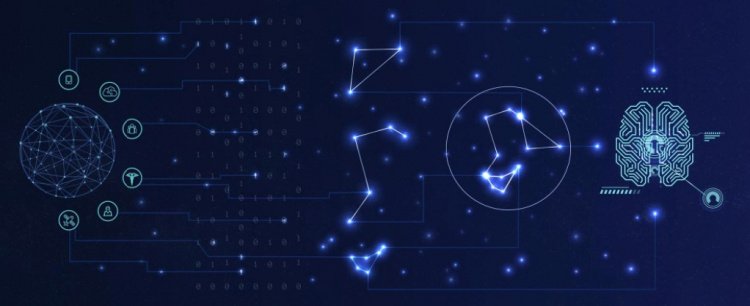Using Blockchain To Clean Up A Murky Data Economy

Increasingly, businesses, governments and other organisations have become evermore data driven. While oil fuelled the economic boom of the last century, so data will power this century. Data production and use is already huge. At our current pace we are creating 2.5 quintillion bytes of data each day and over the last two years alone we have generated 90% of all the data that exists in the world.
Data is produced, and used by, almost everything you can think of from smartphones to social media, GPS systems to the stock market, and it is big money with Big Data and Business Analytics Solutions Forecast to reach $260 Billion in 2022.
With the increasing use of the internet and connected devices, including the emergence of the Internet of Things (IoT), more and more of our everyday actions will emit data from ride sharing to social media and shopping habits. This data will then be used by organisations to guide decision-making.
What exactly is Data Economy?
This production, analysis, selling and use of data has formed its own economy, known as the Data Economy. Yet despite its size and importance, very little is known about it and much of the conversation around data has centred on the acquisition and sharing of personal data, mainly thanks to Facebook, Google and other companies, but the Data Economy goes much deeper than that.
There are many different types of data producers, from mobile apps to Point-of-Sales systems. Then there are the purchasers of data, such as FMCG firms who buy data on how many people purchased their products, or governments who want to know citizens’ travel habits before planning a new train station. However, the method by which these transactions are made are chaotic and opaque.
Threats of the Data Economy
Ultimately though this data could well be inaccurate as many of these middlemen try to hide their sources and make it non-transparent. They do not want to show where this data comes from for either malicious reasons (data could be false, replicated) or non-malicious reasons (they either don’t know or want to protect their own sources). By not knowing the original source of the data it is hard for companies to know its quality and accuracy. Additionally, we are in a world where data can be faked very easily, leading to wrong decisions costing millions of dollars or worse.
Poor data quality can have serious consequences. Multinational companies will pay millions (often hundreds of millions) of dollars for anonymous consumer data that they will use to influence where they will locate their next restaurant or advertise their newest brand of shampoo. Unbeknown to the firm, some of that data could have come from ‘Click Farms’ who operate solely to profit from the sale of false data, which makes its way to legitimate businesses through a Data Supply Chain that lacks transparency.
Solutions exist — blockchain being one of them
Yet while technology has created this problem, technology exists today that can solve it. For example, Blockchain-enabled data authentication technology exists to stamp data with a unique signature (also known as a ‘Hash’) as it is created. This guarantees that, from the time of stamping, any change in or corruption of the data will result in a misalignment to the unique signature, signalling to the buyer that the data has been changed.
Blockchain enables the tracing of the bad data to the bad actor whenever the data is delivered in a bad state. This allows for trust and transparency in the data economy, as companies are able to know the exact source of their data. Importantly, it also allows companies to map disparate sources of data together, organising the data and making it easier to innovate and develop creative solutions and products.
Whether we like it or not, we live in a world where data has become incredibly important to the way we live our lives, and our reliance on data will only increase. So, it is time that we take a serious look at how this data is produced, traded and used. Yes, this means increased consumer protections and cyber security, and it also means more transparency that would drive bad actors out and increase trust. Importantly, this increased trust could result in much more innovation, as accurate data would be made more accessible to more users. It is time to come clean on the Data Economy, and use technology to solve a problem that technology has created.
Image provided by Quadrant
About the author:
Mike Davie is a frequent speaker at ICT and Big Data conferences around the world. He is CEO and Founder of Quadrant, a platform that maps and authenticates data, making it easier to buy and sell quality, authentic datafeeds, spurring innovation and data-driven solutions. Quadrant is also listed on Blockspot.io